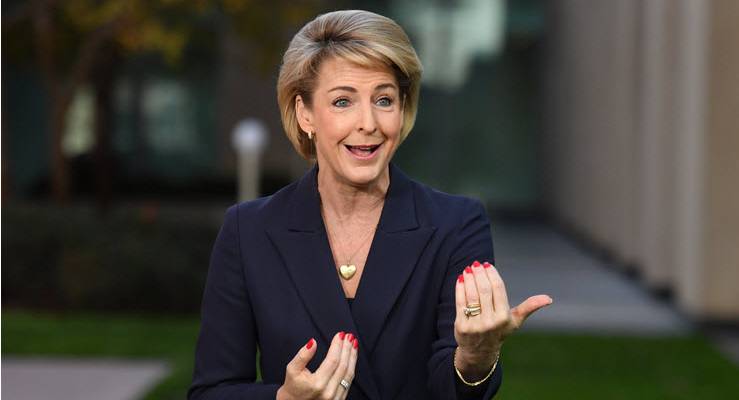
One area where the Coalition is fully entitled to economic bragging rights is participation.
When it came to office in 2013, it had every right to expect labour participation to continue falling: it had peaked at 65.8% in 2011 and had been declining ever since.
Given the ageing of the population and predictions that baby boomers would begin entering retirement, further falls were likely.
But instead, participation bottomed out at around 64.5% in late 2014 and then began rising back over 65%, not perfectly smoothly, but with long-term upward momentum. In May last year, it hit 66%, a record.
Malcolm Turnbull (and his then-treasurer Scott Morrison) get particular credit for this because it was Turnbull’s decision to end Tony Abbott’s cuts to education and health spending and in effect adopt Labor spending policies in both areas — traditionally dominated by female workers — that turbo-charged female participation.
From below 59% in 2015, Turnbull oversaw female participation reach 60% in August 2017; by April last year, it was 61%. Over the last decade, in contrast, male participation, which peaked at around 72% under Labor, has hovered between 70 and 71%.
That meant that not merely did Australia’s participation rate go up, but it also boosted female economic empowerment. It’s something Australia, and Turnbull and the Liberals, can legitimately be proud of.
The high-level participation reached early last year has stayed at that level ever since … until last month, when the pandemic shut the economy down.
Participation fell to 63.5% in April, a level last seen in September 2004. Fifteen years’ hard work undone in a month.
Female participation fell by 2.9 percentage points compared to male participation, which fell 1.9 points — it was women who bore the brunt of the shutdown of hospitality and the widespread closure of retail outlets, as well as private hospitals suspending operations.
The fall in the participation rate reduces the headline unemployment figure (which otherwise would have been 9.6%), but also means lasting economic damage.
The rate will partly spring back with the easing of lockdown restrictions, but some people may give up looking for work altogether, if unemployment remains high.
A particular problem will emerge on that front in September. As the ABS pointed out yesterday, without the JobKeeper program keeping people officially in jobs even if they’re not working at all, the 6.2% unemployment rate would actually be 11.7% or more.
If the JobKeeper program is withdrawn, as planned, in September, it will push hundreds of thousands of people into the formally unemployed category, sending the headline rate skyrocketing and likely deterring even more people from joining or rejoining the job market.
That is bad news for those people, of course, but bad news for the wider economy too. Australia couldn’t defy demographic gravity forever — that participation rate was eventually going to fall.
But the pandemic has set us back much more quickly than expected.









Who is that woman in the photo?
Best you just close your eyes.
A train wreck waiting to happen.
The Cackling Cashtastrophe,
I would like to see how the Participation Rates are calculated.
(1) In the Employment sphere, you are determined to be employed, even if you are only working 1-2 Hours a week. Does this blur the numbers?
(2) A significant amount of people who are employed in low hours positions, work multiple jobs. How does this impact?
(3) Older people who lose their jobs, often do not go and register as Unemployed. Does this have an impact?
Raw statistics are not always as they seem when you discover how they are calculated!
Morrison & Co need to be reminded that should they cease Jobkeeper the unemployment figures will not only sharply escalate but could affect our international credit rating.
Hate to break it to you, Bernard, but Labor deserves far more kudos for keeping Participation rates above 65% than the Coalition do. Labor was able to drag participation rates up from the doldrums of the Howard Era up almost 66%…….in spite of the GFC & its aftermath. They also did this whilst keeping unemployment below 5.5% & wages growth largely above 3%. For the bulk of the current government’s lifetime, participation rates have languished at below 65%, & only got above that level within the last 1-2 years. Yet, in spite of that, average unemployment rates have been higher, whilst wages growth has been lower, under the current government. So spare us the undeserved accolades of this current government, they don’t deserve any. Especially as we don’t know how much their figures are fudged by things like the Internship Scheme & Work for the Dole.
Without this article ,I would never have known how good the employment situation was, due to the Coalition .